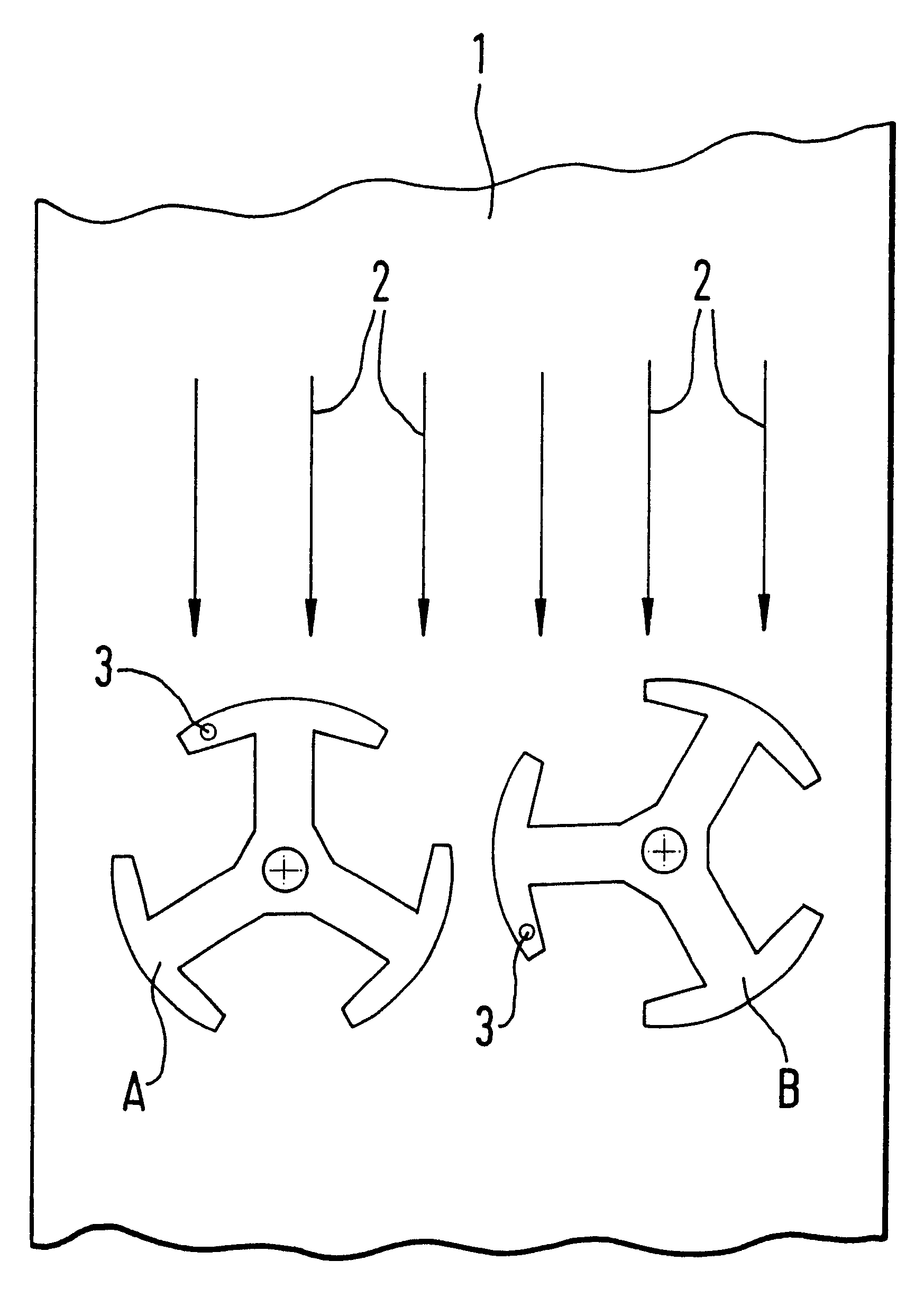Process for manufacturing a rotor or stator of an electric machine out of sheet metal blanks
a technology of electric machines and blanks, which is applied in the direction of stator/rotor bodies, magnetic circuit rotating parts, magnetic circuit shape/form/construction, etc., can solve problems such as process failure, achieve high degree of material utilization of rolled sheet metal strips, and increase tool production costs.
- Summary
- Abstract
- Description
- Claims
- Application Information
AI Technical Summary
Benefits of technology
Problems solved by technology
Method used
Image
Examples
Embodiment Construction
A sheet metal band section 1 shown in the sole FIGURE has a predominant magnetic direction indicated with arrows 2 due to rolling procedures that are a part of its manufacture. With a stamping tool, not shown, a number of sheet metal blanks A and B for a rotor of an electric machine, which are disposed sequentially in the longitudinal direction of the sheet metal band 1, are stamped out of the sheet metal band by means of two dies. The one-piece sheet metal blanks A and B are embodied as congruent. However, they are asymmetrically embodied because of a form deviation 3. If a rotor lamination bundle were to be exclusively made up of layers of the sheet metal blanks A or the sheet metal blanks B, then the predominant magnetic direction 2 would be uniformly aligned in all of the sheet metal blanks in the respective lamination bundle. This would lead to a disadvantageous output behavior and noise behavior of the machine containing the lamination bundle.
According to the invention, theref...
PUM
| Property | Measurement | Unit |
|---|---|---|
| Angle | aaaaa | aaaaa |
| Angle | aaaaa | aaaaa |
| Angle | aaaaa | aaaaa |
Abstract
Description
Claims
Application Information
 Login to View More
Login to View More - R&D
- Intellectual Property
- Life Sciences
- Materials
- Tech Scout
- Unparalleled Data Quality
- Higher Quality Content
- 60% Fewer Hallucinations
Browse by: Latest US Patents, China's latest patents, Technical Efficacy Thesaurus, Application Domain, Technology Topic, Popular Technical Reports.
© 2025 PatSnap. All rights reserved.Legal|Privacy policy|Modern Slavery Act Transparency Statement|Sitemap|About US| Contact US: help@patsnap.com


